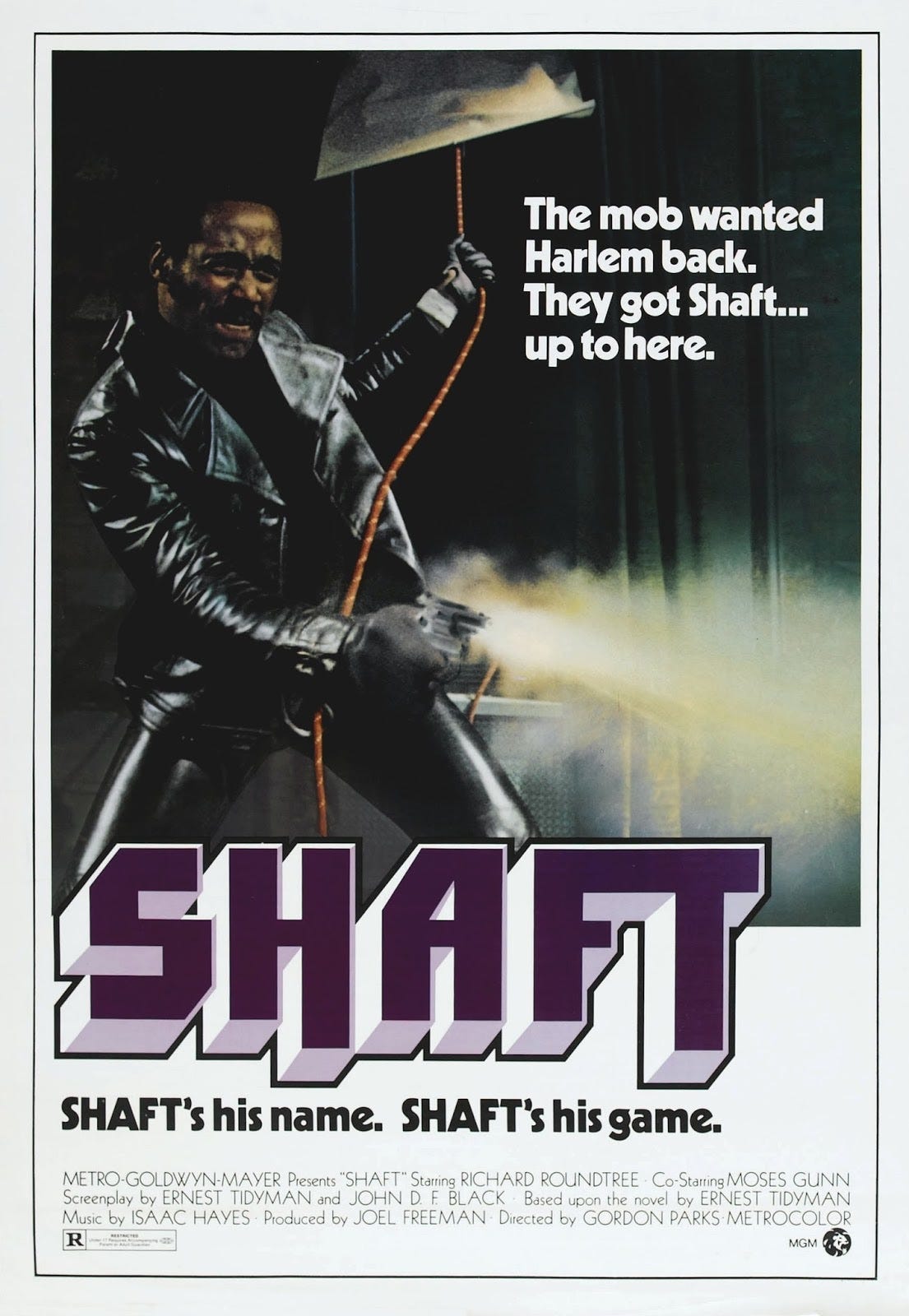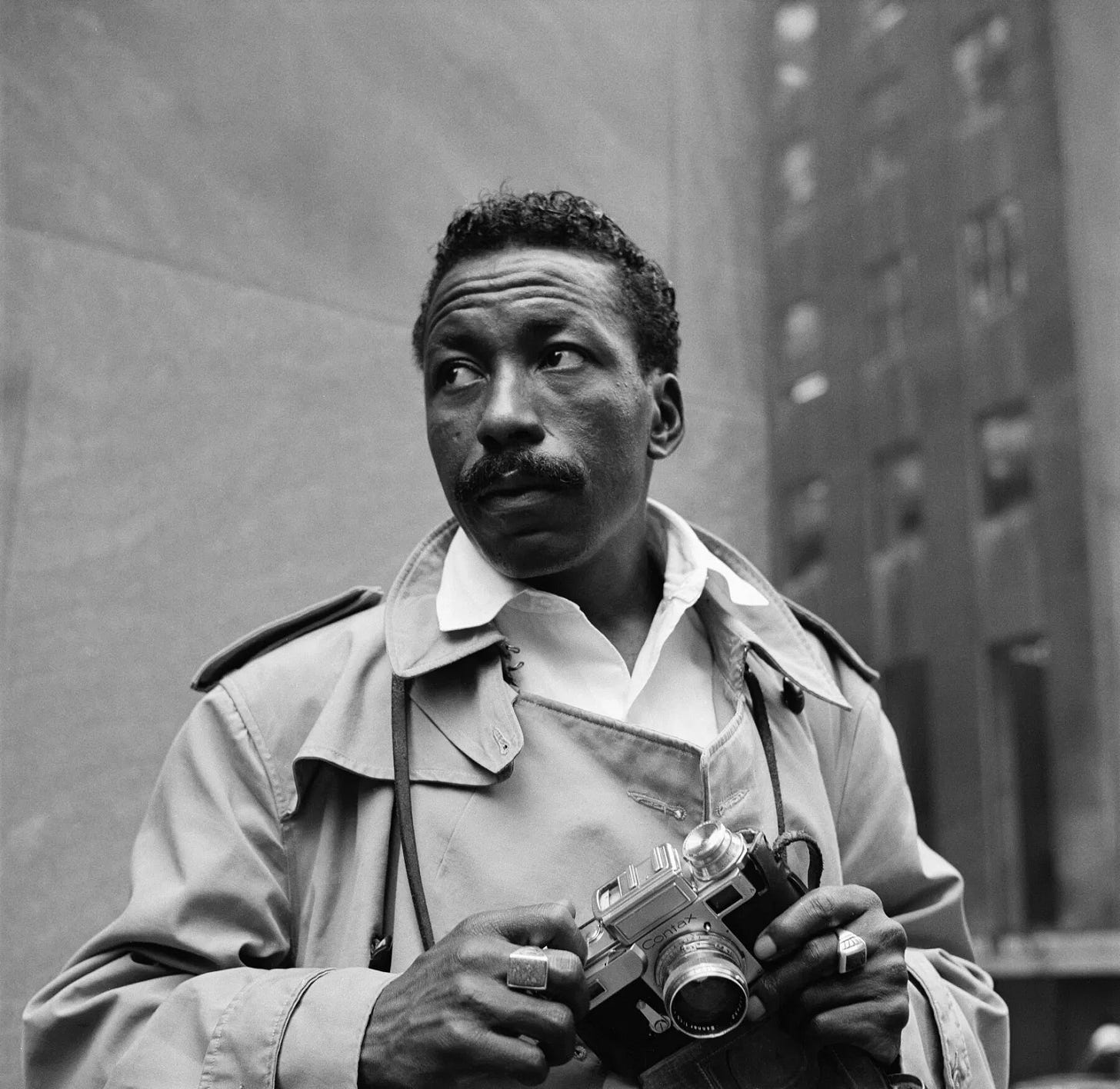3/100: Shaft (1971)
Hollywood's first Black action hero and his incredible brown leather trench coat
Shaft (1971)
Costumes by: Joseph G. Aulisi
Directed by: Gordon Parks
This movie may be for you if: you are inspired by the styling of Black revolutionaries, daydream about 1970’s New York City, and love a man in a turtleneck (with a gun).
Where to watch: I don’t currently see it streaming free anywhere. It’s available to rent for $3.99 on YouTube, Apple TV, and multiple other platforms.
Shaft is a cornerstone and early example of the American Blaxploitation film, widely considered one of the best movies in the genre. The term itself was coined a year after the release of Shaft by Junius Griffin, president of the Beverly Hills-Hollywood branch of the NAACP. Griffin and other members criticized the burgeoning genre for proliferating stereotypes of violence and inherent criminality in the Black community. The legacy of John Shaft’s character is complicated, but there’s one thing we can all agree on: Shaft looked cool as hell.
Costume designer Joseph G. Aulisi worked on theater productions for years before making his film debut with Shaft. Like almost every other costume designer featured in this project, Aulisi is white. The costumes in Shaft are clearly inspired by real-life Black culture, but interpreted from the outsider perspective of a white designer.
Leading man Richard Roundtree was a successful model before pivoting to the big screen, launching a long-running movie career with his portrayal of private detective John Shaft. The film opens on the streets of 1970’s New York City, following Roundtree as he jaywalks in a striking leather coat. The scene is emblematic of director Gordon Parks’ signature style, offering viewers stylized yet storied depictions of the Black experience in America.
Roundtree’s confident masculinity was essential to creating a successful hero character at the time. Shaft is hot, strong, and misogynistic - exactly what audiences in 1970 wanted.
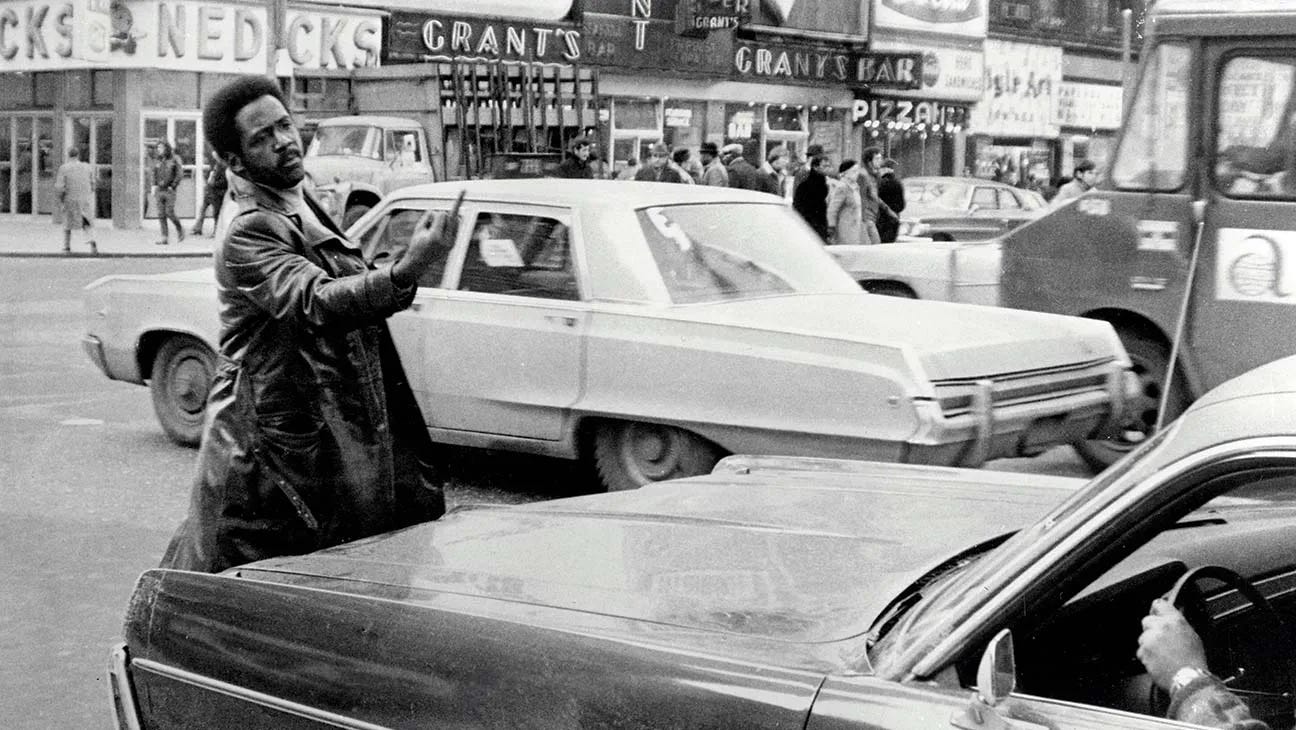
The film’s opening montage concludes with Shaft entering a shoe shine shop, quickly establishing the importance of appearance to his character. His signature piece is a long, dark brown leather coat with oversized lapels, a fashion-forward silhouette of the time. Beneath the coat, Shaft wears well-tailored suits, flares, and fitted sweaters. His fashion is firmly planted in the early 70’s, suave but showy, in warm earth tones that characterized the fashion of the era. Shaft is always impeccably dressed, his sharp attire always trumping the questionable logistics of actually wearing a long leather coat to do action-hero detective work.
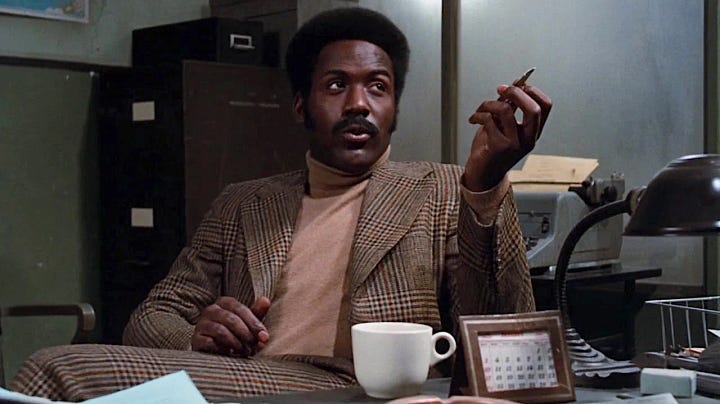
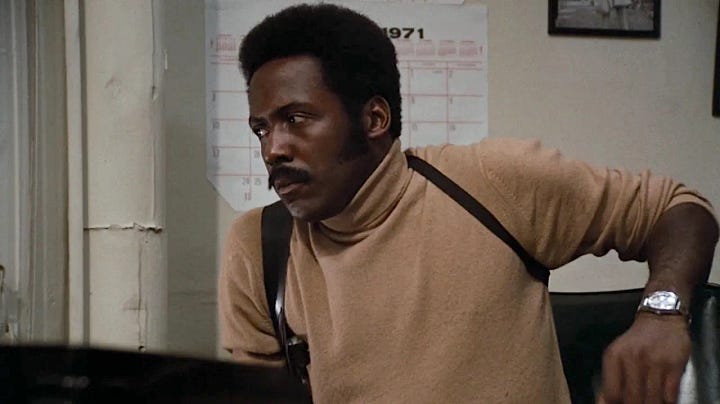
Shaft’s costuming was highly referencial to the styling of the Black Panther Party, founded five years before the movie’s release. Black revolutionaries of the 1960’s had adopted leather jackets as an unofficial uniform, marking a shift away from the “Sunday Best” fashions of earlier Black liberatory organizations. Powerful activists were rejecting the respectability politics as prescribed by earlier factions in the American Civil Rights Movement, instead turning to Afro-centric fashion and symbolic garments like berets, slogan buttons, and afros.
The Black militant group in the film, called The Lumumbas, were undoubtedly inspired by the real-life Black revolutionaries that Parks knew. In 1970, LIFE Magazine tasked Parks with reporting on the Black Panthers, focusing on party leader Eldridge Cleaver. Fleeing government persecution, Cleaver and his wife Kathleen moved to Algiers, where they were interviewed and photographed by Parks around the same time that he would have been working on Shaft.
Keep reading with a 7-day free trial
Subscribe to 1-800-VINTAGE to keep reading this post and get 7 days of free access to the full post archives.





